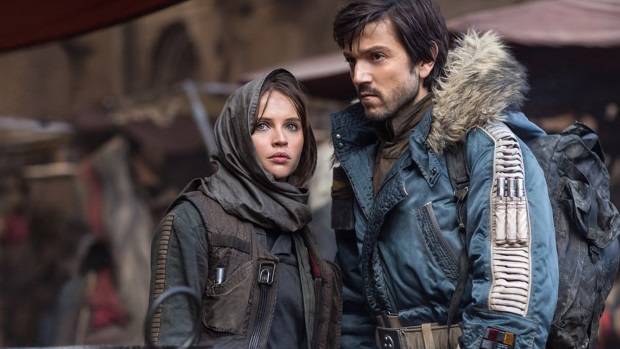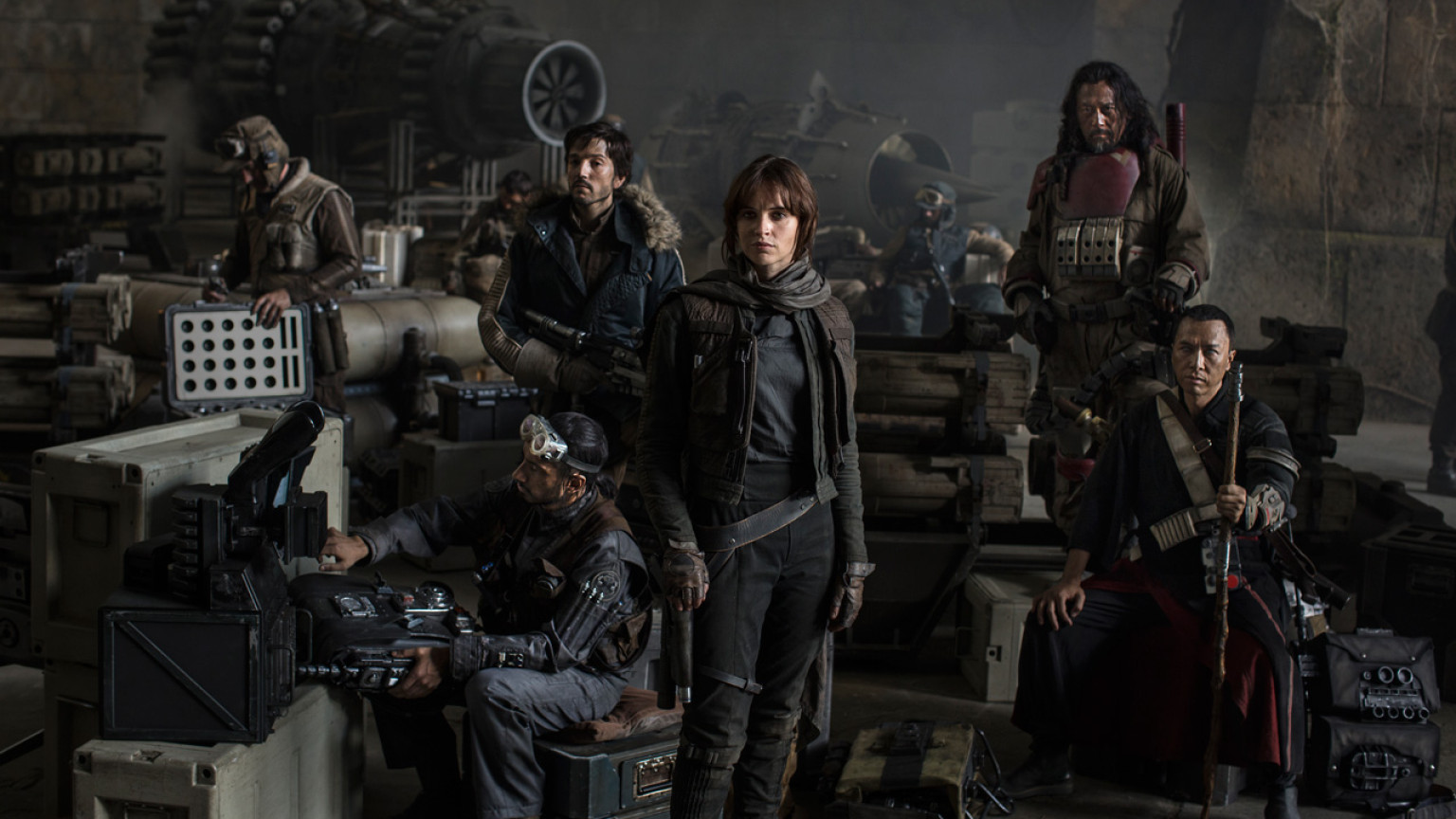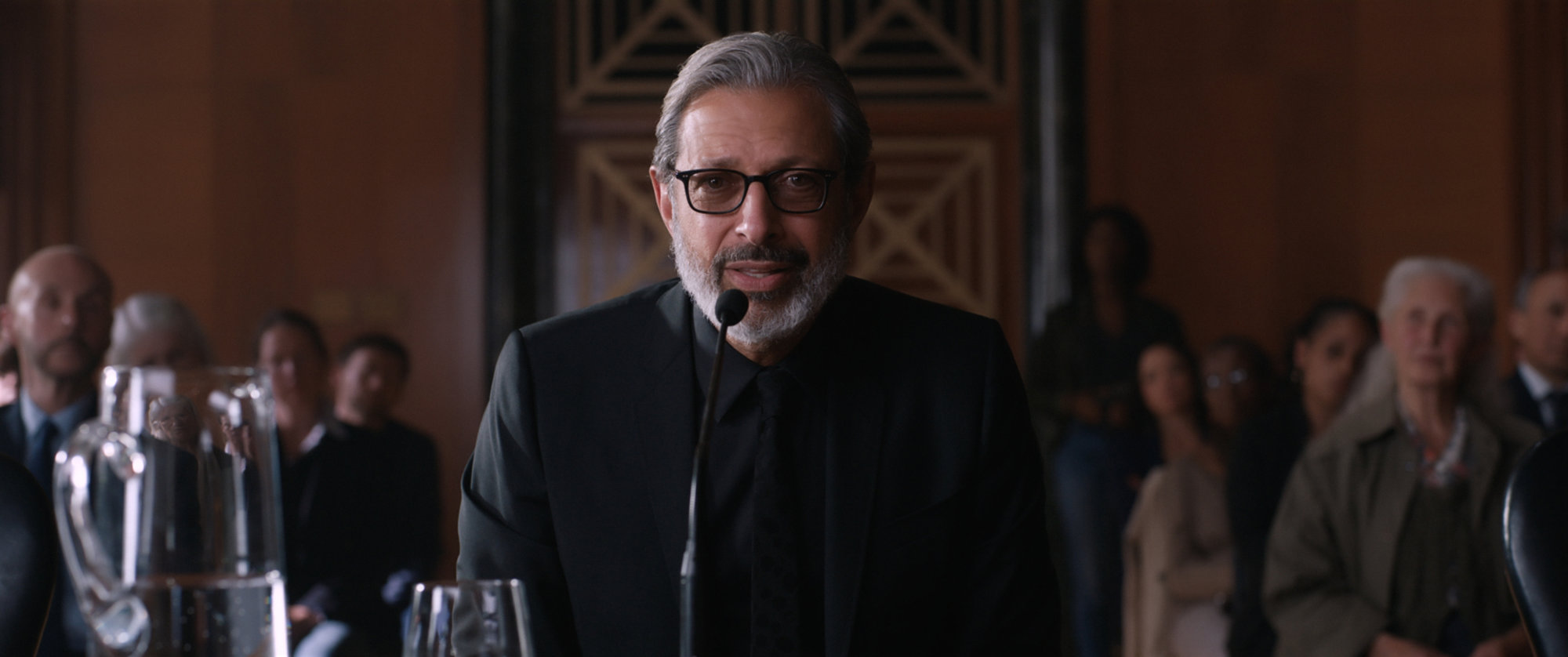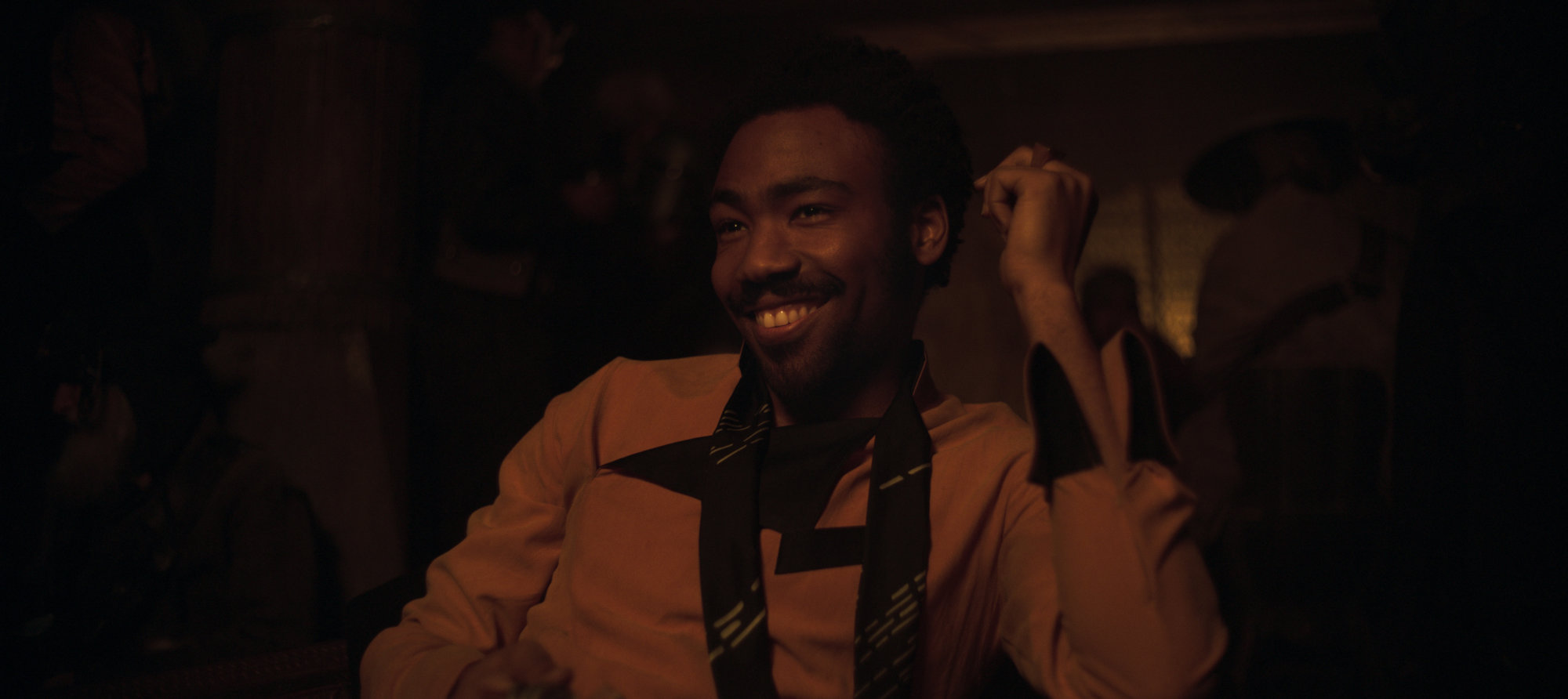A Star Wars Story and a Franchise in Paralysis
In pursuing bigger and bigger spectacle, is the Star Wars Story spin-off franchise missing the point of its existence?
This article comes from Den of Geek UK.
When Disney’s acquisition of Lucasfilm was announced in the autumn of 2012, it marked the start of a new phase in the Star Wars franchise. Not just because Lucasfilm, now under the control of its new president Kathleen Kennedy, would put in motion a new series of numbered sequels – beginning with The Force Awakens in 2015 – but because it would also start work on a planned string of spin-off movies.
The first of these was, of course, Rogue One. About the theft of the Death Star’s plans from the clutches of the Empire, it was the first in Lucasfilm-Disney’s anthology series, A Star Wars Story. Essentially a franchise within a franchise, the Star Wars Story strand was billed as a chance to explore new tones and previously unseen characters within the existing Star Wars universe.
Or, as John Kushins’ book, The Art Of Rogue One, put it in 2016: “Unhindered by the trilogy format, here was a chance to survey the full expanse and history of the galaxy from entirely new angles, and to allow visionary filmmakers to bring fresh perspectives to Star Wars.“
A quick look back through the history of Rogue One‘s production exposes just how much Lucasfilm-Disney’s intentions for this fledgling series changed within just a few months, and how its creative shift would ultimately affect this year’s Solo, and the Star Wars Story series as a whole.
Rogue One began life as a one-line concept by John Knoll, a visual effects genius (and Photoshop creator) who’s long played a quiet yet important part in the Star Wars franchise. As his concept flourished from a line from A New Hope‘s opening title crawl (“Rebel spies managed to steal secret plans to the Empire’s ultimate weapon…”) to a more detailed story, Knoll successfully pitched it to Kathleen Kennedy. Within months, Rogue One had the greenlight.
During Rogue One‘s development, Knoll cut together footage from such movies as Mission: Impossible and The Hunt for Red October to create an impression of what the spin-off could look like. It was, said concept artist Ryan Church, “Very militaristic, streamlined, and self-contained.”

Early on, Knoll was working on the idea that Rogue One would be much smaller in budget than The Force Awakens. Church even recalls, in The Art of Rogue One, that Knoll had come up with a plan that involved recycling sets from Episode VII to help reduce costs.
“What was really interesting was that, at the time, John had a number in his head that he wanted to be able to make it for,” Church said, “and it was a low, low number – a really low budget.”
The filmmakers Lucasfilm hired during pre-production appeared to reflect this “militaristic, streamlined” vision for Rogue One. Gary Whitta, the screenwriter who’d work Knoll’s concept up into a full script, got the job because he imagined the movie as a sci-fi spin on Zero Dark Thirty, Kathryn Bigelow’s thriller about the search for Osama Bin Laden.
“There was a ton of Zero Dark Thirty footage in there,” Whitta later said, recalling the first time he saw Knoll’s proof-of-concept presentation. “So I did say the right thing. I made the right reference, and maybe that’s one of the reasons why they felt I had the same sensibility for what the film would be as John’s original vision was.”

Casting around for a director, Lucasfilm settled on Gareth Edwards, the British filmmaker who’d made the indie hit, Monsters, and the 2014 reboot of Godzilla. In fact, it was Monsters that first endeared Edwards to Rogue One‘s producers, and not the big-budget Godzilla, which hadn’t yet come out when Rogue One was in pre-production. It was Edwards’ ability to make an atmospheric sci-fi drama with just a few actors and a handheld camera that caught the eye of executive producer Jason McGatlin:
“[Monsters] created a real-world experience in a fantasy zone populated by these creatures […] And that’s what we wanted for Rogue One – a movie about people that takes place in Star Wars. Grounded and real.”
The deeper Rogue One got into its development, however, the more it floated away from the modestly-budgeted war film its creators originally envisioned. As Knoll explained to Coming Soon shortly after Rogue One‘s release:
“Oh yeah, it definitely changed. In its original conception, it was a bit smaller than this. You know, Kathy had talked about these standalone stories being smaller and scrappier and potentially lower-budgeted pictures. I had kind of geared the story with that in mind of not as many locations or as many big, epic events. As we got into more detailed story development, you know, the canvas sort of kept expanding and more epic things kept popping up and going into the movie.”

The shift in Rogue One‘s scale was clear just from the news stories that came out of its production. Original screenwriter Gary Whitta was replaced by Chris Weitz; later, Edwards was joined (or perhaps even nudged aside) by Michael Clayton writer-director John Gilroy. By the time he joined, Rogue One was, Gilroy later claimed, “in a swamp.”
“We were just in terrible, terrible trouble,” Gilroy told the Brian Kappleman Podcast, “that all you could do was improve their position […] It was just a mess of fear that they had gotten themselves in.”
In a series of much-publicized reshoots, Gilroy heavily reworked Rogue One‘s final act, earning himself credits as co-writer and editor, plus a reported payday that ran into the millions of dollars.

While reshoots are a normal part of movie-making – particularly of the big-budget variety – it’s telling just how greatly Rogue One differed from its early concept of a self-contained, gritty war film. When Edwards was hired, there was much talk about the intimacy of his handheld, documentary-style camerawork. The finished Rogue One contained only occasional glimpses of this. The final act was heavy on aerial battle sequences rather than ground-level war scenes. Far from contained and economical to make, Rogue One contained about 1,700 effects shots, according to Knoll.
Neither was this change solely part of its creative development. Rather, it appeared to come from Disney itself, which seemed intent on making A Star Wars Story into a bigger “event” scale franchise.
“[From] the discussion with Disney, it became clear that they were really open to the idea of going bigger with these movies,” Knoll told Coming Soon. “And they thought, hey, if it’s a good story, the budget will be there, so let’s make it the best movie we can make it.”

Rogue One wound up costing somewhere in the region of $216 million after tax breaks – only about 20 percent less than The Force Awakens, which cost about $258 million. Not that Disney had to worry too much about its bank balance: in theatres alone, Rogue One made more than $1 billion worldwide.
The decision to make the Star Wars Story movies into expensive event films on a par with, say, Marvel’s standalone superhero movies would, however, be felt even more greatly during the production of the second film in the series: Solo.
When the then-untitled film about Han Solo was announced in early 2015, it was revealed that directors Phil Lord and Christopher Miller (The Lego Movie, 21 Jump Street) would be bringing it to the screen. The problem was that, by the time filming commenced in early 2017, Lord and Miller’s shoot-from-the-hip, improv-heavy style of filmmaking was no longer of a piece with the on-brand event movie that Disney now wanted.

This would explain why, as the shoot neared its conclusion that summer, Lord and Miller were essentially fired from the production. As with Edwards, Lord and Miller’s appointment was part of the old concept of making lower-budget Star Wars movies that took a few creative risks. By June 2017, though, the parameters had changed, and the duo’s tendency to diverge from Lawrence and Jon Kasdan’s script and add off-the-cuff humor (which may have been workable in a smaller-scale movie) no longer fit with the brief.
All this meant that, by the time veteran filmmaker Ron Howard came in to take over directing duties, as much as 70 percent of Solo had to be reshot from scratch. It’s estimated that the resulting movie cost as much as $275 million in total – a sum that outstrips The Last Jedi, a mainline sequel that, depending on where you look, cost about $200-250 million to produce.
At the time of writing, Solo‘s been in cinemas for precisely one month, and has made about $350 million. It’s a sum regarded in some circles as a flop, and opinions vary as to why Solo has struggled financially as no other Star Wars movie has before it. Was it franchise fatigue? Did the reports of reshoots and replacement directors harm it?

Whatever the reasons, Solo‘s tepid performance highlights a glaring problem with Disney’s decision to make its Star Wars Story movies into expensive, major events. Had Solo cost, say, $100 million to make rather than $275 million, then a $350 million global take would have looked far more impressive.
And while both Rogue One and Solo had much to recommend them, we can only wonder what both films might have been like had other filmmakers not intervened late in their production. Solo, in particular, was far away from the “smaller and scrappier” movies with differing tones, stories, and directorial styles that Lucasfilm once talked about making.
There is, however, a small sign that Lucasfilm and Disney may be looking again at how they approach the spin-off franchise. According to The Hollywood Reporter, Lucasfilm’s still working on things like a side project based on Boba Fett, but it’s looking at how it can be “reconfigured “to work as a lower-budget movie. In short, it’s possible that the studio’s at least considering the option of returning to its original concept for A Star Wars Story: smaller movies that don’t need to make $1 billion in order to turn a profit.

Star Wars is, even now, uniquely placed to explore the two-pronged franchise approach. It has the (almost) global appeal that can allow a mainline sequel like The Last Jedi to make over $1 billion worldwide. But it also has a universe that is expansive and detailed enough to allow for smaller movies in other genres. Rather than try to churn out a four-quadrant blockbuster every year, Lucasfilm could stretch out and explore other characters and genres: sci-fi twists on samurai movies, comedies, and self-contained dramas.
J.J. Abrams’ production company, Bad Robot, enjoyed an unexpected success with 10 Cloverfield Lane, a low-budget and largely unrelated spin-off from its Cloverfield monster franchise. It’s easy to imagine Lucasfilm doing something similar with Star Wars, even as a one-off experiment. A $50-$100 million Star Wars movie with so-so reviews and a modest audience turn-out would certainly be easier to shrug off than one that cost nearer $300 million.
Until then, A Star Wars Story could remain in the grip of a kind of franchise paralysis: if every movie has to be a $1bn hit, then Disney has to tell stories that serve as wide an audience as possible. And how can it do that every year, over and over again, without repeating itself?

Lucasfilm surely needs to rediscover the unpredictability and sense of wonder that made the original Star Wars a hit in 1977. Star Wars has its roots in pulp fiction, low-budget B-movies, and cheap serials. The bigger and more corporate it gets, the more it loses the honesty and conviction that defined A New Hope‘s storytelling.
In short, Kennedy needs to follow her own advice from a couple of years ago.
“It’s interesting to think about what sets Star Wars apart,” Kennedy once said. “A lot of people wonder what the magic formula is, if there is one; I think it comes from an authenticity and a genuine feeling of aspiration that embody who George was when he started making films […] George loves movies – anything from John Ford westerns to Kurosawa films to World War II movies – and I think that’s something we as filmmakers can draw from.”